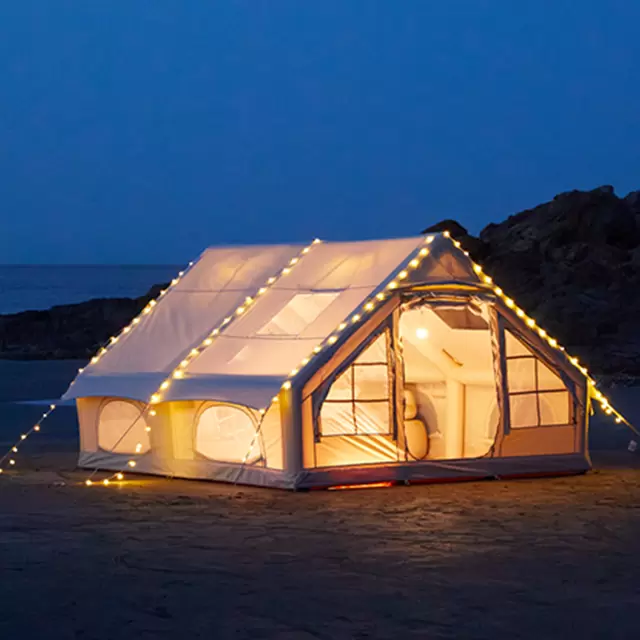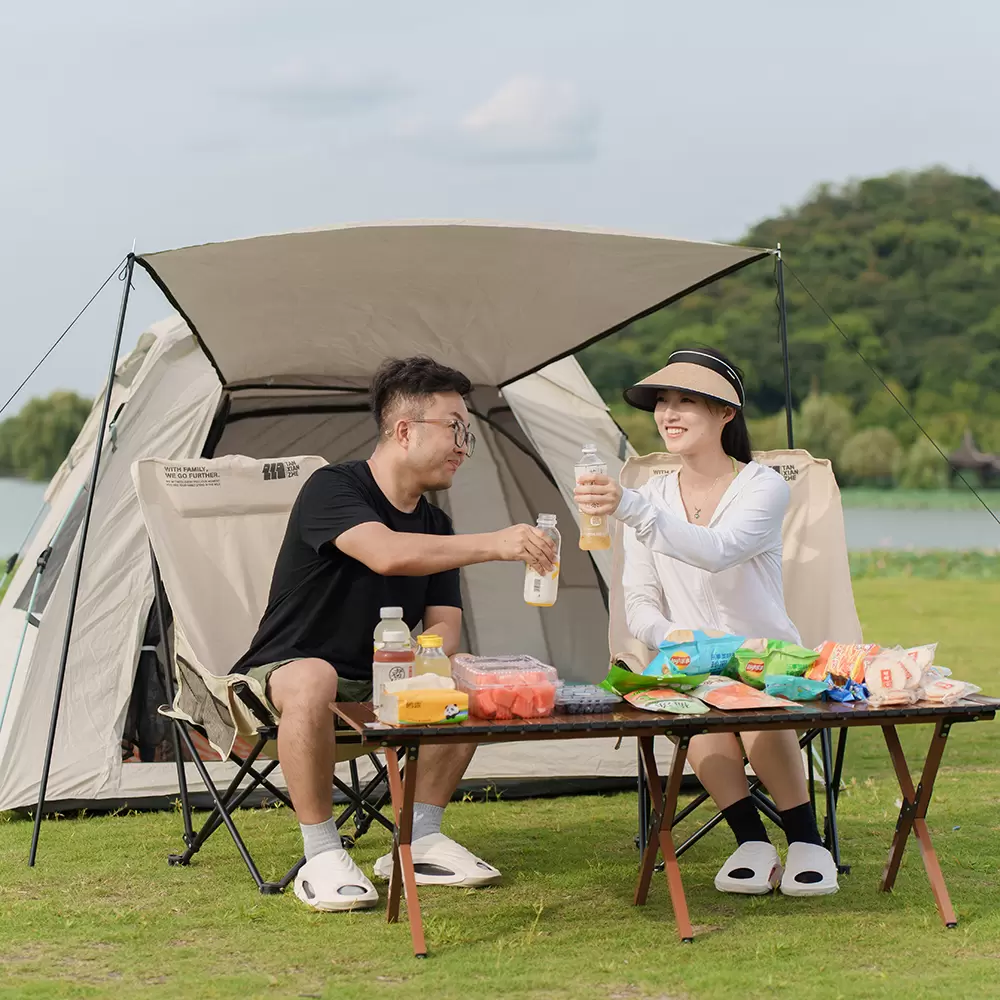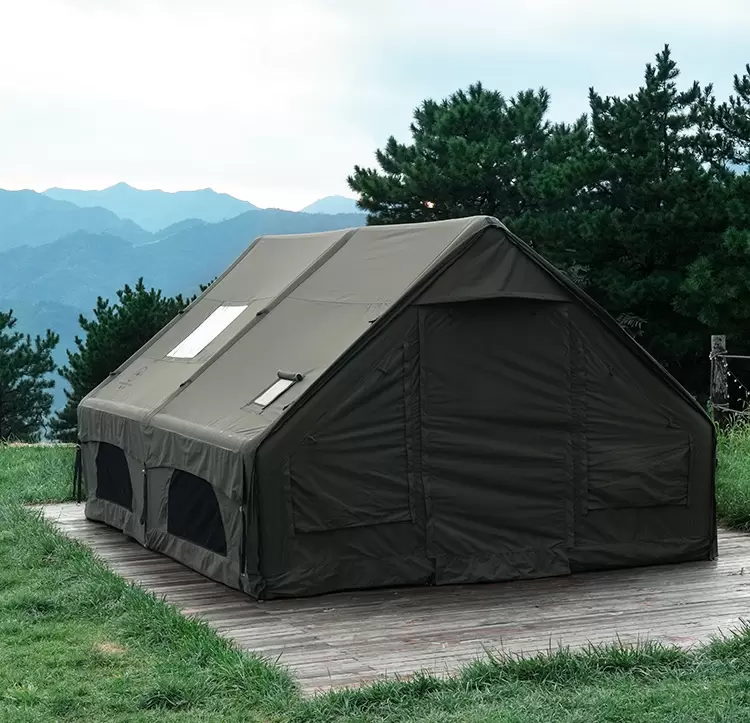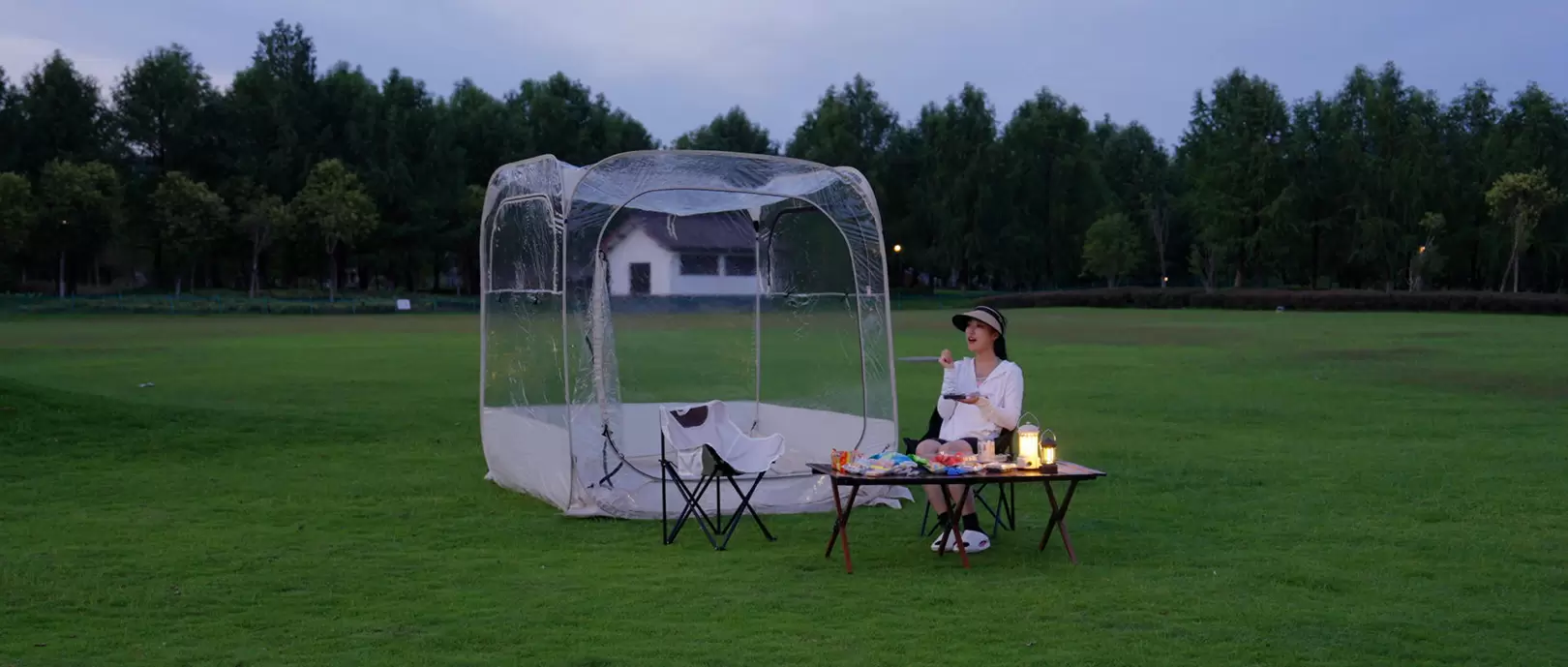With the rise in popularity of outdoor sports and adventure activities, more and more mountaineering enthusiasts and high-altitude explorers are turning their attention to snow-capped mountains, glaciers, and other extreme mountainous regions. In such environments, ordinary camping tents often struggle to withstand the harsh cold and strong winds. High-altitude outdoor camping tents, with their specialized design and powerful performance, have become essential equipment for safety and comfort. This article will comprehensively analyze the advantages and applications of high-altitude outdoor camping tents, including design features, a purchasing guide, usage tips, and recommended brands.
1. Characteristics of High-Altitude Tents
High-altitude environments are often accompanied by challenges such as low temperatures, strong winds, snow and rain, and intense UV rays. Therefore, high-altitude tents must possess the following features:
Excellent wind resistance: At high altitudes, winds can reach over 10, even accompanied by blizzards. High-altitude tents typically feature a double-layer structure with a flysheet made of high-strength tear-stop polyester or nylon, coupled with a sturdy aluminum alloy or carbon fiber frame, effectively protecting against strong winds and ensuring the tent's stability.
Excellent thermal insulation: A well-designed interior, fully enclosed flysheet, and high-density windbreaks effectively block out cold winds. Some high-altitude tents also feature double-layer breathable fabric and thermal insulation to minimize heat loss and provide a warm environment for outdoor adventurers.
High Waterproofing and Snow-Loading Capacity: In snowy mountains and glaciers, snow can accumulate easily on top of the tent. High-altitude tents typically feature a highly waterproof coating (such as PU or silicone), with a waterproofing coefficient of over 3000mm for the outer tent. They also feature a sloped roof structure to allow snow to slide off naturally, reducing the risk of collapse.

Balancing Lightweight and Portability: While high-altitude tents emphasize strength and wind resistance, modern high-altitude tents strive for lightweight materials to facilitate carrying on long hikes. By optimizing the frame structure and tent fabric materials, a balance of sturdiness and lightness is achieved.
2. High-Altitude Tent Buying Guide
Choosing a tent suitable for high-altitude adventures requires comprehensive considerations based on environmental conditions, the number of users, and personal needs:
Choosing the right tent type based on the environment
Four-season tents: Suitable for snowy mountains, glaciers, and cold mountainous areas, they feature a sturdy structure and strong wind resistance.
Three-season tents: Suitable for mountain camping in spring, summer, and autumn, but not recommended for long-term use in cold, high-altitude environments.
Choose tent size based on the number of people.
Single- or two-person tents are suitable for hiking and mountaineering and are easy to carry.
Tents for three or more people are suitable for group camping, but they are heavier, so you need to plan your load accordingly.
Focus on materials and frame design.
Tent fabric: Tear-resistant, waterproof, and UV-resistant are essential.
Frames: Aluminum alloy or carbon fiber frames are ideal for both lightness and strength. The diameter and number of frames directly impact wind resistance.
Ground spikes and ropes: High-quality ground spikes and reinforced ropes enhance the tent's stability.
Consider ventilation and snow protection.
High-altitude temperatures fluctuate greatly, so tents should have ventilation windows and snow bars to prevent condensation and snow accumulation. Double-wall tents offer an effective balance between warmth and breathability.
Portability and ease of setup:
When hiking or mountaineering at high altitudes, weight and setup efficiency are crucial. We recommend choosing quick-setup tents or single-pole tents to save energy and time.
3. Tips
Choose a good camping spot: Avoid cliffs, rock faces, or areas with heavy snow. Set up your tent on relatively flat ground with low winds.
Secure the tent properly: Use ground spikes, reinforced ropes, and guy ropes to secure the tent securely, preventing it from being lifted or moved in strong winds.
Precautions for snowy conditions: When setting up your tent on snowy ground, clear the snow or compact it before using ground spikes. You can also place a moisture-proof mat underneath the tent for added insulation.
Keep the tent dry: High altitudes can cause significant temperature fluctuations, which can easily lead to condensation inside the tent. Use ventilation windows and double-layered ventilation to maintain air circulation, reduce moisture accumulation, and protect your gear from getting damp.
4. Conclusion
A tent for high-altitude camping is more than just camping equipment; it's crucial for safety and comfort. Choosing a tent that's sturdy, windproof, snowproof, warm, and lightweight is essential for a successful high-altitude adventure. Whether hiking in the snow, exploring glaciers, or camping in extremely cold weather, a high-altitude tent provides a safe, reliable, and comfortable temporary home. At high altitudes, every adventure is filled with uncertainty and challenges. Choosing a professional high-altitude tent will enhance your outdoor adventures and make camping in extreme conditions easier and more enjoyable.
As a professional tent enterprise, Haojin specializes in the research, development, and sales of outdoor camping tents, dedicated to providing snow-resistant, warm, lightweight, and portable tent solutions for mountaineers, hikers, and those exploring extreme cold environments. With superior material selection, a scientific frame design, and a user-friendly double-layer structure, Haojin's tents are not only built to withstand severe cold and strong winds, but also ensure quick setup and convenient storage, allowing outdoor adventurers to enjoy a safe and comfortable camping experience even in extreme conditions.











